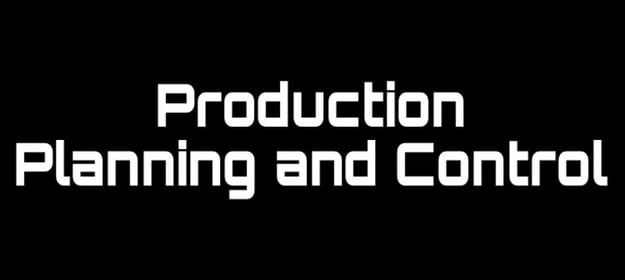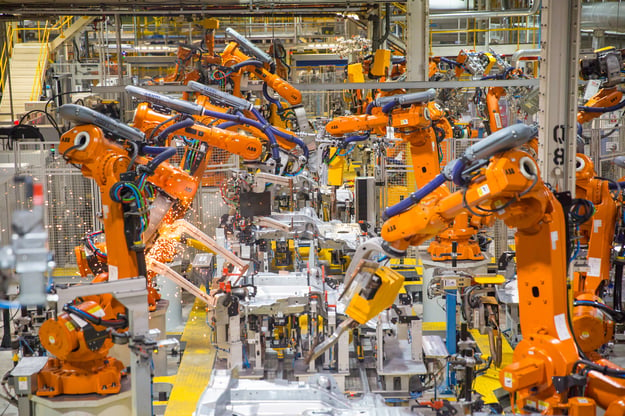Manufacturing facilities have found production to be much more challenging without production planning and control. Although ERP and MRP have made production much more efficient, there is still room for improvement.  Production planning and control offers capabilities that can aid your manufacturing facility by improving overall production efficiency while also minimizing waste, ultimately allowing your facility to utilize resources to its fullest. Before implementing a production planning and control system, it is essential to analyze the steps associated with the software and visualize the process.
Production planning and control offers capabilities that can aid your manufacturing facility by improving overall production efficiency while also minimizing waste, ultimately allowing your facility to utilize resources to its fullest. Before implementing a production planning and control system, it is essential to analyze the steps associated with the software and visualize the process.
Planning
Preparation of a proper production plan is key within production planning and control. Orchestrating a plan allows production to have a schedule to follow, which can further improve the entire the process. A production plan can determine:
- What is Going to be Produced
- Where it is Going to be Produced
- How it is Going to be Produced
- By Who it is Going to be Produced
The production plan is conducted through information about quantity and quality of raw materials, customer orders, and the overall budget. This is how the plan is able to generate multiple schedules and quickly translate them into labor requirements for machines, workers, or any materials. Overall, the production plan is the foundation for the entire manufacturing process and production planning and control software makes it much simpler.
Routing
Once production plans are generated and ready to be executed, routing comes into play. Routing determines the path that raw materials will take through machines, operations, and labor within the factory. This path is located through analysis of operation data and the sequence of operations. This portion of the production planning and control software is extremely advantageous because of its ability to locate alternate paths and schedules that account for maintenance, breakdowns, or any other form of downtime.
Scheduling
The next step within production planning and control is scheduling. This portion of the software pertains mainly to time and when the work will be completed. This is when the production plan is almost completed and ready to be enacted. Scheduling differs from planning by diving into the details of the production process.  The schedule locates what equipment and labor will complete in an almost exact quantity and time, ultimately enabling a steady flow of production. Once this step is complete, production is ready to begin.
The schedule locates what equipment and labor will complete in an almost exact quantity and time, ultimately enabling a steady flow of production. Once this step is complete, production is ready to begin.
Dispatching
Dispatching is the step in which all of the work on paper is then turned into production. This feature of the software makes sure that tools, equipment, and people are prepared, while also ensuring that production is moving according to the instructions. Overall, dispatching is the main function that allows production to flow accordingly while also taking all of the factors associated with manufacturing into consideration.
Expediting
Once dispatching is applied, expediting is the final step within the production control process. This feature conducts analysis on production and keeps track of any inefficiencies and waste that is created and attempts to locate ways to further improve the process. As this process is completed, the entire cycle restarts and production comes closer and closer to reaching maximum efficiency.
Advanced Planning and Scheduling Software - PlanetTogether
Advanced planning and scheduling software offers various benefits and capabilities that can take your production to the next level. Some of the features of advanced planning and scheduling software include the following:
- Finite Capacity Scheduling
- What-if Scenarios
- Drag and Drop
For more information on the features of PlanetTogether’s APS, click here!
Related Multi-Plant Video
APS Resources